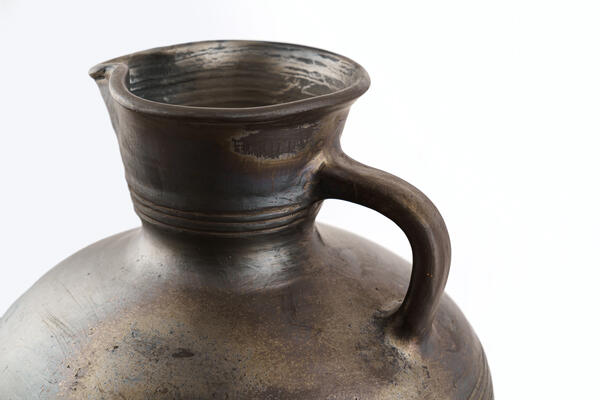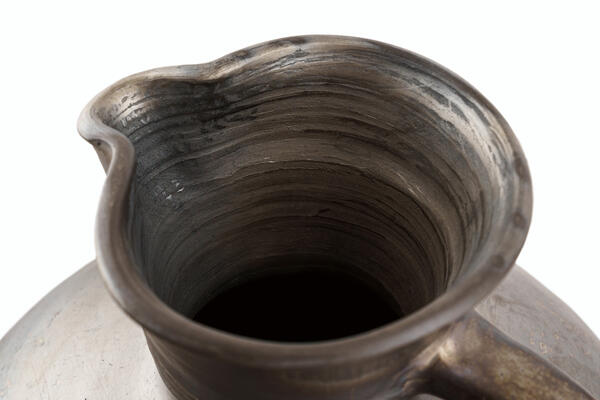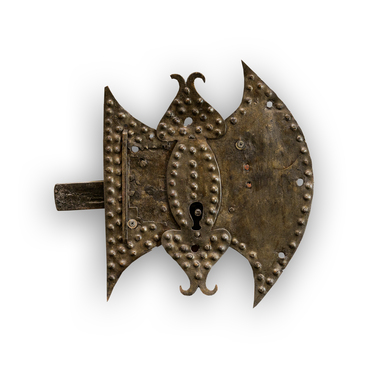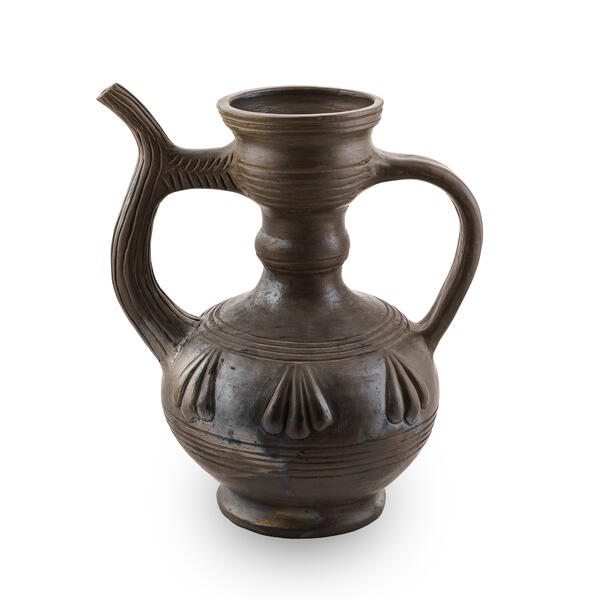The museum exhibition presents a large ceramic vessel of dark gray color with a dim luster on the outer surface. It has a round bottom and an inverted pear-shaped body that expands upwards from the bottom and then narrows sharply, passing into a narrow neck, which has the shape of an inverted cone. There is a spout on one side at the edge of the mouth. The neck and body are connected by a short arc-shaped handle. The upper part of the neck and the body are decorated with narrow grooves: a belt of three grooves at the top and four grooves at the bottom.
A jug is a clay, glass or metal vessel, relatively tall, barrel-shaped, with a tapering neck, a handle and a spout, sometimes with a lid. A jug was used to serve drinks. It could have a spherical or cone-shaped lid. The surface of copper, pewter, and silver jugs was smooth or spoon-shaped, decorated with chasing or engraving. The decorative patterns consisted of plant motifs, images of lions, leopards, sirins, unicorns and fairy birds. Such jugs were produced in large quantities in the late 17th — early 18th centuries for rather well-to-do city dwellers, but they were also used by rich peasants in the northern governorates of European Russia.
Every peasant family had a lot of ceramic jugs made of simple pottery clay, turned black after firing or glazed. They were common as early as in the 13th century and are often found in archaeological excavations of towns and villages. Along with simple clay jugs, more expensive majolica jugs were also used in Russian households. Such vessels began to be made in the 18th century not far from Moscow, at ceramic factories in the village of Gzhel and neighboring villages. These were jugs decorated with paintings of mauve, yellow, green, blue and brown colors on raw white enamel. The jugs were often inscribed with the names of the owners and the craftsmen who painted them.
In ancient times, the jug, along with the pot, had
an important ritual significance in the funeral rites of many peoples.





